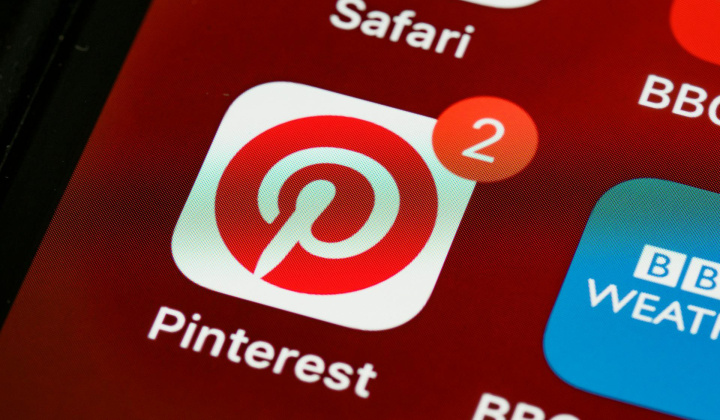Pinterest for Small Businesses: Making Big Impacts with Smart Strategies
In the ever-evolving digital landscape, Pinterest emerges as a beacon of opportunity for small businesses aiming to carve out their niche and captivate an engaged audience. With its unique blend of visual discovery and personalized inspiration, Pinterest offers more than just a platform; it provides a canvas for small businesses to showcase their creativity, products, and brand story. However, navigating the Pinterest ecosystem requires more than just pinning hopes on viral content; it demands strategic planning, understanding of the platform’s intricacies, and a keen insight into the behaviors of its users. In this article, we delve into practical strategies that small businesses can employ to make big impacts on Pinterest, transforming it from a mere social network into a powerful marketing ally.
Understanding Pinterest’s Unique Positioning
Pinterest stands out in the crowded social media landscape due to its unique blend of inspiration, personal aspiration, and visual discovery. Unlike other platforms that prioritize news or social updates, Pinterest focuses on the individual’s future plans, dreams, and projects. This unique positioning not only shapes how users interact with the platform but also offers distinct advantages for businesses aiming to connect with their audience in a meaningful way. Here's why understanding Pinterest's unique positioning is crucial for small businesses looking to leverage the platform:
- Visual Search Engine: At its core, Pinterest functions as a visual search engine. Users come to Pinterest to discover ideas, products, and inspirations for everything from home decor and fashion to recipes and DIY crafts. This search-driven behavior means that content on Pinterest has a longer shelf life compared to posts on other social networks, where visibility tends to fade quickly.
- Intent-Driven Audience: Pinterest users often have a specific intent, whether it's planning a wedding, renovating a home, or finding the perfect recipe. This intent-driven use makes Pinterest an ideal platform for small businesses to reach potential customers who are already in a mindset to explore, discover, and eventually make purchasing decisions.
- High Purchase Intent: Studies have shown that Pinterest users are more likely to purchase products they find on the platform compared to other social media networks. This high purchase intent is a golden opportunity for small businesses looking to drive sales through social media marketing.
- Rich Pins and Shop the Look: Pinterest offers features like Rich Pins and Shop the Look, which allow businesses to provide more information directly on their pins, such as product details, price, and availability, making it easier for users to make purchasing decisions.
- Inspiration to Action: Pinterest bridges the gap between inspiration and action. Users often turn their digital discoveries into real-world projects and purchases. For small businesses, this means the opportunity to be part of the user's journey from inspiration to purchase is significantly higher on Pinterest.
- Demographic Diversity: While Pinterest’s user base skews towards women, it’s rapidly diversifying across genders, ages, and interests, providing a broad audience for a wide range of businesses.
- Global Reach: Pinterest has a strong international presence, offering small businesses a platform to reach beyond local boundaries and tap into global markets.
Understanding these unique aspects of Pinterest is the first step for any small business looking to craft a marketing strategy that capitalizes on the platform's strengths. By aligning their content and approach with Pinterest’s distinct user behavior and preferences, businesses can effectively engage with their target audience, drive meaningful interactions, and ultimately, achieve their marketing objectives.
Crafting a Pinterest Content Strategy

For small businesses looking to make an impact on Pinterest, a deliberate and well-constructed content strategy is essential. This strategy should not only spotlight your brand's visibility but also resonate deeply with your audience's interests and needs. Below are steps to develop an effective Pinterest content strategy:
- Identify Your Target Audience: Start by understanding who your audience is on Pinterest. Utilize analytics and industry trends to pinpoint what your audience searches for, and craft detailed personas that reflect their interests, challenges, and aspirations related to your business.
- Define Your Content Themes: Choose content themes that align with your audience's interests. These might include DIY tips, how-to guides, inspirational boards, or product features. Remember to weave in seasonal trends and timely topics to keep your content fresh and engaging.
- Focus on High-Performing Content Types: Pinterest favors visually appealing, high-quality images. Infographics, how-to guides, short engaging videos, and Story Pins can significantly boost your visibility and engagement. These content types are shareable, informative, and tailored for Pinterest's visual platform.
- Plan Your Content Calendar Strategically: A consistent posting schedule is crucial. Mix various content types and themes to maintain an interesting and varied profile. Incorporate content that is relevant to upcoming holidays, seasons, and events that align with your industry and audience interests.
- Optimize for Engagement: Use compelling calls-to-action in your pin descriptions to prompt users to engage further, be it visiting your website, making a purchase, or saving the pin. Building a community around your brand is also vital—engage by repinning content, commenting on pins, and interacting with your followers.
- Regularly Measure and Adjust Your Strategy: Leveraging Pinterest Analytics will provide insights into which types of content perform best. Adjust your strategy based on what you learn about your audience's preferences. Experimenting with different content formats, posting schedules, and calls-to-action will help fine-tune your approach for optimal engagement.
Implementing a Pinterest content strategy that effectively captures your target audience's attention requires attention to detail, creativity, and ongoing optimization. By focusing on providing value and maintaining an authentic brand voice, you can leverage Pinterest not just as a social platform, but as a powerful tool to connect with your audience and achieve your marketing objectives.
Optimizing for Pinterest SEO
Optimizing your content for Pinterest SEO is essential to increase your visibility and reach on the platform. Pinterest is not just a social network but also a powerful search engine where users look for inspiration, ideas, and products. Here are key strategies to enhance your Pinterest SEO and ensure your pins get found by your target audience:
- Keyword Research: Start by identifying keywords relevant to your brand and industry. Use Pinterest's search bar to explore popular search terms and phrases. Incorporate these keywords into your pin titles, descriptions, and the text overlay on your images.
- Optimize Your Profile: Make sure your Pinterest profile is fully optimized for SEO. Include keywords in your profile name and description. This not only helps users understand what your brand is about but also improves your visibility in search results.
- Use Descriptive Pin Titles and Descriptions: Every pin should have a clear, descriptive title and an informative description. Utilize keywords naturally, and aim to provide value to your audience with each description. This helps Pinterest understand the context of your pins and improves their chances of appearing in relevant search results.
- Create Keyword-Rich Board Titles and Descriptions: Similarly, your board titles and descriptions should also include relevant keywords. This helps categorize your content appropriately and increases the discoverability of your pins.
- Enable Rich Pins: Rich Pins provide more context about an idea because they show extra information directly on a Pin. There are four types of Rich Pins: app, product, recipe, and article. Enabling Rich Pins can make your content more appealing and informative, leading to higher engagement rates.
- Engage with the Community: Engagement is a key factor in Pinterest SEO. Regularly engaging with other users by pinning their content, commenting, and replying to comments on your pins can increase your visibility and authority on the platform.
- Use Hashtags Wisely: Unlike other platforms, Pinterest recommends using no more than 2-3 relevant hashtags per pin. Hashtags help categorize your content and make it discoverable in real-time searches.
- Monitor Pinterest Analytics: Keep an eye on your Pinterest analytics to understand which content performs best and why. Use these insights to refine your SEO strategy and focus on creating content that resonates with your audience.
- Stay Consistent: Consistency is key in SEO. Regularly updating your boards with fresh, relevant content helps maintain and improve your visibility on Pinterest.
By implementing these SEO strategies, you can significantly improve your pins' visibility, attract more targeted traffic, and increase engagement on Pinterest. Remember, SEO is an ongoing process, so continually optimize and refine your approach based on performance data and platform updates.
Analyzing Your Pinterest Analytics
To refine your Pinterest strategy and ensure your content resonates with your audience, it's essential to dive into Pinterest Analytics regularly. This powerful tool sheds light on how users interact with your pins and offers insights into your account's overall performance. Here’s how to make the most of your Pinterest Analytics:
- Understand Key Metrics: Focus on important metrics such as impressions, engagements, clicks, saves, and the audience insights section. These metrics give you a comprehensive view of how well your content performs and who is engaging with it.
- Track Pin Performance: Monitor which pins are getting the most impressions, clicks, and saves. High-performing pins indicate content types and topics that resonate with your audience, guiding your future content creation.
- Monitor Audience Insights: Audience insights provide valuable information about your followers and those who interact with your content, including their other interests. This can help you tailor your content strategy to better match your audience's preferences.
- Evaluate Engagement Trends: Look for trends in engagement over time. Are certain types of content, posting times, or days of the week performing better? Use this information to optimize your posting schedule and content strategy.
- Refine Your Content Strategy Based on Data: Use the insights gained from your analytics to refine your content strategy. If certain topics or types of content are consistently performing well, consider creating more of that content. Conversely, if some pins have low engagement, think about how you can adjust those topics or the presentation to better capture your audience’s interest.
- Adjust Based on Click-through Rate (CTR): The CTR tells you how often people who see your pin end up clicking on it. A low CTR might indicate that your pin's image or description isn't compelling enough, or it might not match the searcher's intent.
- Use A/B Testing: Experiment with different pin designs, descriptions, and hashtags to see what leads to the best engagement and CTR. A/B testing can provide direct feedback on what adjustments can improve your pin performance.
- Leverage Video and Story Pins Analytics: If you're using video or story pins, analyze their specific analytics to understand viewer engagement and completion rate. This can inform how you create future video content that keeps your audience engaged.
By regularly analyzing your Pinterest Analytics, you can make informed decisions that enhance your Pinterest marketing strategy, leading to increased engagement, reach, and ultimately, conversions for your small business. Remember, the goal is to use these insights to continuously evolve and adapt your strategy to meet the needs and interests of your target audience on Pinterest.
Future Trends in Pinterest Marketing
Staying ahead in digital marketing means keeping an eye on the horizon and anticipating the next big trends. For small businesses leveraging Pinterest, understanding upcoming trends can provide a competitive edge and open new avenues for engagement and growth. Here's a look at what the future might hold for Pinterest marketing:
- Increased Focus on E-commerce Integration: Pinterest is likely to further enhance its shopping features, making it even easier for users to purchase products directly through the platform. This means businesses should prepare for more direct e-commerce opportunities, such as improved product tagging and seamless checkout processes.
- Augmented Reality (AR) Experiences: With the rise of AR technology, Pinterest might introduce more AR features allowing users to visualize products in their own space before making a purchase. Businesses could leverage AR to offer virtual try-ons or home decor visualizations.
- Video Content Dominance: The popularity of video content is expected to grow, with Pinterest investing more in video pins and stories. This trend suggests that businesses should focus on creating engaging video content that can capture the attention of their audience quickly.
- Sustainability and Ethical Practices: As consumers become more conscious about sustainability and ethical business practices, Pinterest users will likely gravitate towards brands that align with these values. Highlighting eco-friendly products, sustainable practices, and ethical sourcing can help businesses connect with this audience.
- Personalization and AI: Pinterest's use of artificial intelligence (AI) for content discovery and personalization is expected to become more sophisticated. Businesses that tailor their content to the individual preferences and behaviors of their target audience will stand out and drive more engagement.
- Interactive and Shoppable Pins: The future might introduce more interactive elements in pins, such as quizzes, polls, and direct purchases. This interactivity can increase user engagement and make shopping on Pinterest an even more integrated experience.
- Expansion of Pinterest Ads: Pinterest is likely to expand its advertising options, offering more targeted and diverse ad formats. Businesses should stay updated on new ad products and targeting capabilities to maximize their reach and impact.
- Global Market Penetration: As Pinterest continues to grow its user base globally, there will be increased opportunities for businesses to reach international audiences. Tailoring content to different cultures and languages can help businesses tap into new markets.
- Voice Search Optimization: With the growing use of voice search, optimizing content for voice queries will become more important. Businesses should consider how people might use voice search to find pins related to their products or services and adjust their SEO strategies accordingly.
- Increased Use of Analytics for Strategy Optimization: Finally, the use of advanced analytics to drive content and marketing strategy on Pinterest will become more critical. Businesses that adeptly analyze their performance data and adapt their strategies accordingly will gain a competitive advantage.
By keeping these future trends in mind and preparing to adapt to the evolving digital landscape, small businesses can leverage Pinterest more effectively to connect with their audience, showcase their brand, and drive sales in innovative ways.
Conclusion
As we navigate the dynamic and visually rich landscape of Pinterest, it's evident that the platform offers a unique and powerful opportunity for small businesses to amplify their brand, connect with an engaged audience, and drive meaningful business outcomes. By understanding Pinterest's unique positioning, crafting a tailored content strategy, optimizing for Pinterest SEO, analyzing performance through Pinterest Analytics, and staying ahead of future marketing trends, small businesses can unlock the full potential of Pinterest marketing. By the way, visit our Pinterest page, where there are useful videos to help you set up integrations and automate workflows yourself.
The journey to Pinterest success is iterative and requires creativity, adaptability, and a keen eye for the evolving digital trends. With the right strategies in place, small businesses can transform their Pinterest presence into a vibrant community of followers, advocates, and customers. As you embark on or continue your Pinterest marketing journey, remember that the essence of success on the platform lies in inspiring and empowering your audience with content that resonates, engages, and converts.
Strive to take your business to the next level, achieve your goals faster and more efficiently? Apix-Drive is your reliable assistant for these tasks. An online service and application connector will help you automate key business processes and get rid of the routine. You and your employees will free up time for important core tasks. Try Apix-Drive features for free to see the effectiveness of the online connector for yourself.

